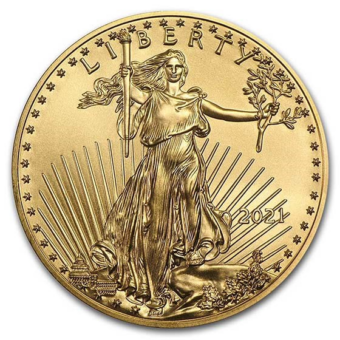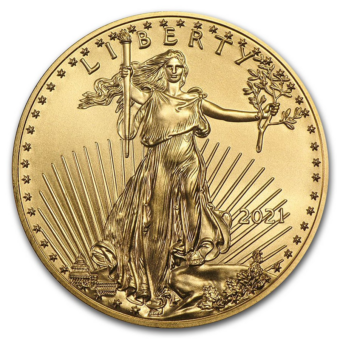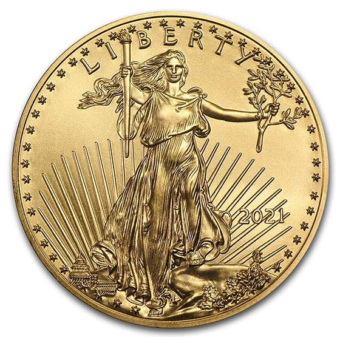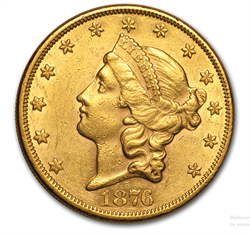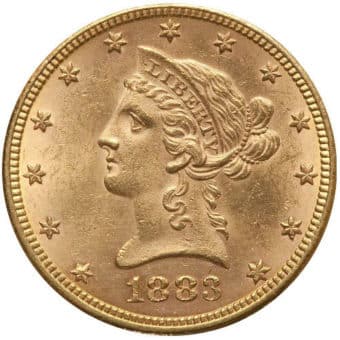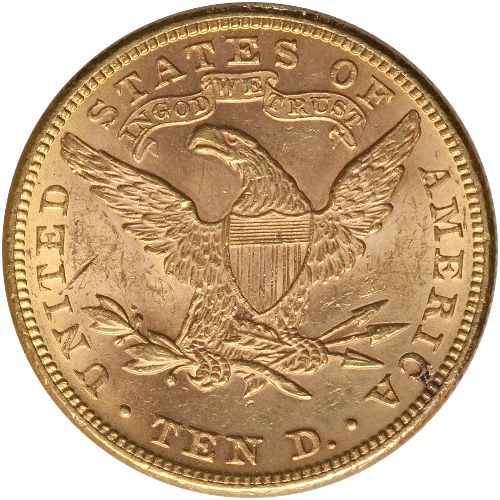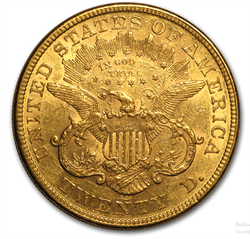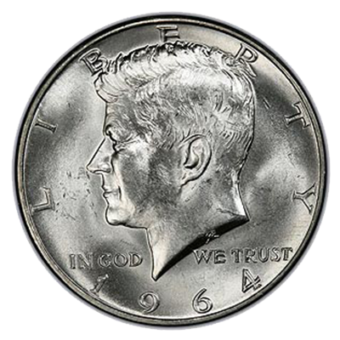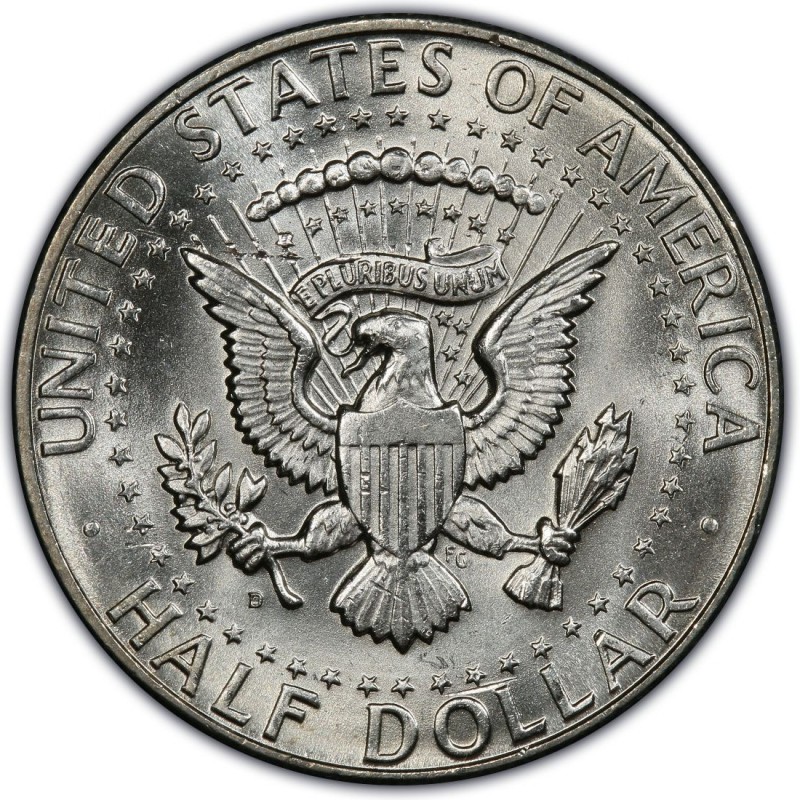The Gold Trail: A Daily Journey Through the Week's Market
Monday - 10.09.23: Gold prices surged following a surprise Hamas attack on Israel over the weekend. Global stock markets reacted negatively. The conflict, marking the most significant violence in Israel in 50 years, has vast political and economic implications, potentially influencing major economies, central bank policies, and even the U.S. Congress's selection of a new Speaker.
Tuesday - 10.10.23: Gold prices rose slightly due to the ongoing Israel-Hamas conflict, with December gold at $1,869.00 and December silver at $21.80. The market's subdued reaction to the severe geopolitical crisis in the Middle East, described as Israel's worst in 50 years, has surprised many experts. The situation is expected to escalate, potentially involving other nations, indicating that the crisis might worsen before improving. Traders and investors are advised to exercise caution.
Wednesday -10.11.23: Gold and silver prices increased due to rising safe-haven demand amid the Israel-Hamas conflict and expectations of a pause in Federal Reserve interest rate hikes. While the current Middle East violence is significant, markets remain relatively stable as such turbulence isn't new to traders and investors. Recent comments from Federal Reserve officials suggest a possible extension in the pause of interest rate increases.
Thursday - 10.12.23: Gold and silver prices have risen due to modest safe-haven demand, influenced by concerns over escalating Israel-Hamas tensions and a perceived less-hawkish Federal Reserve. December gold and silver saw increases. The U.S. consumer price index report for September is anticipated to show a 4.1% annual rise, versus 4.3% in August. A higher-than-projected CPI could impact the metals' bullish sentiment, but Middle East tensions are expected to maintain a supportive base for the prices.
Friday- 10.013.23: Middle East tensions are escalating, prompting safe-haven demand for gold. The U.S. has also imposed stricter sanctions on Russian crude exports, resulting in a 4% oil price surge. Due to geopolitical uncertainties, gold prices have crossed $1,900 an ounce, with December futures trading at $1,922.50, a 2% rise.
Gold Bolstered by Decline in Consumer Sentiment Amid Rising Inflation Fears
The gold market experienced a notable increase as the University of Michigan's preliminary reading revealed a drop in its Consumer Sentiment Index to 63, a decrease from September's 68.1 and below the anticipated 67.2. The decline in consumer sentiment, marking around a 7% fall for October, has been attributed to rising concerns over inflation and a roughly 15% drop in assessments of personal finances. The report further highlighted that while long-term economic conditions are expected to remain stable, short-term business conditions have seen a sharp decrease in expectations. Notably, inflation expectations have surged, with consumers anticipating a 3.8% rise by the following year, which is a significant jump from the previous month's 3.2%. This recent data has given additional support to the gold market, emphasizing its value as a safe-haven asset during economic uncertainties.
Gold In 1979 and 2023: When History and Greed Collide
In a world awash with economic uncertainties and the constant ebb and flow of financial tides, there's a contrarian clarion call piercing the cacophony: Buy gold. This isn't just another financial strategy, but a defiant move against the often misguided mainstream financial directives, offering a potential sanctuary against an imminent upheaval in paper assets.
Recent maneuvers by the Federal Reserve have sent ripples across the economic waters. By slashing the US monetary base by a staggering US$896bn and subsequently switching gears to jack up interest rates, they've invoked memories of October 1979—a tumultuous period for the US economy, marked by similar aggressive monetary postures. The recent rise in interest rates, a whopping 11 times since March 2022, is eerily reminiscent of that period.
Drawing parallels to the financial maelstrom of the 1970s, it's becoming increasingly evident that the currents of the gold market and the broader US economy might be converging towards a stormy confluence. The 1970s bore witness to gold prices undergoing wild gyrations, and with today's real interest rates still not matching historical peaks and the Federal Reserve’s aggressive tactics seemingly on pause, the stage seems set for another bull run for gold. While skeptics point to potential lows, several economic indicators suggest a bullish trend, with gold prices possibly breaching the US$3,000/oz mark, and even flirtations with US$4,500/oz not entirely out of the question.
In this high-stakes financial theater, with history's ghostly echoes serving as a backdrop, the spotlight is firmly on gold. The inevitable climax looms large: Are we merely spectators, or are we strategizing our moves in this grand economic chessboard?
Inflation's Stranglehold: From Wholesale to Wallets
In a bracing blow to consumers and an unsettling prompt for policymakers, September's inflation metrics overshoot predictions. The consumer price index nudged up 0.4% for the month, a clip swifter than the Dow Jones' anticipated 0.3%. Notably, shelter costs, accounting for a hefty chunk of the CPI weighting, saw a 0.6% monthly surge. While the markets only wavered slightly in response, the real dagger is the tangible dip in worker wages in real terms, intensifying the squeeze on family budgets.
Inflation continues its relentless march, not just denting consumer pockets but climbing up the wholesale ladder at a pace not seen since April. U.S. wholesale prices jumped 2.2% year-on-year in September, outpacing the previous month's 2% rise, as reported by the Labor Department. This uptick is largely attributed to the soaring energy prices (3.3% month-to-month). Interestingly, while 2022 saw the fiercest inflation in four decades, prompting 11 aggressive rate hikes by the Federal Reserve, the current sentiment leans towards a potential pause in these increases. Despite this unsettling inflationary trend, there's a glimmer of hope; the economy stands resilient, and experts are optimistic about the Fed achieving a 'soft landing' without catapulting the economy into a stark recession.
$1885 or Bust: Gold’s Precipice
Teetering on a financial tightrope, gold's fate hinges on the elusive $1,885-an-ounce mark, asserts Ole Hansen of Saxo Bank. Despite rallying close to $1,900, U.S. CPI metrics and escalating inflation threaten to pull the rug out from under the precious metal. Still, gold's uncanny resilience hints at an underlying demand, rooted not just in central banks but traders hedging against economic turbulence. With the U.S. bond market spiraling and Hansen's persistent bullish stance, gold's narrative unfolds in a dance of volatility and potential.
Middle East Turmoil Sends Gold Soaring to Safe-Haven Heights
Amid the escalating conflict between Israeli forces and Palestinian group Hamas, gold prices shot up, reaching a one-week zenith. As political tensions intensify in the Middle East, the gleam of gold shines brighter, reinforcing its status as a sanctuary during global unrest. With spot gold hitting its highest mark since late September and U.S. gold futures climbing steadily, experts anticipate the potential for further surges if the Middle Eastern situation deteriorates. Meanwhile, as Wall Street wobbles and oil prices surge, all eyes pivot to the forthcoming Federal Reserve minutes and U.S. inflation data. Yet, the overarching consensus is clear: in times of crisis, gold's safe haven status remains unwavering.
Navigating to the Elusive 2%: Inflation Challenges Ahead
While on the surface, achieving the Federal Reserve's 2% inflation target might seem straightforward, the reality is proving more complex. The primary challenges are services and shelter costs, which have been more resistant to fluctuation compared to other economic components. Notably, Steven Blitz, the chief U.S. economist at GlobalData TS Lombard, indicates that a recession might be necessary to genuinely approach the 2% mark. Despite a decrease in annual inflation as measured by the consumer price index, significant concerns persist, especially with shelter costs showing substantial increases. The broader economic sentiment is one of uncertainty, with varied opinions on the possibility of a looming recession and its potential depth. As the Fed weighs its next moves, the housing market remains a central concern, with rising rates potentially exacerbating affordability issues.
How Market Dynamics Are Positioning Gold for a Comeback
Despite recent challenges, including a significant dip last month, resulting in the gold market experiencing a "death cross", the long-term outlook for gold remains optimistic. Tim Hayes, Chief Global Investment Strategist for Ned Davis Research, highlighted that although gold prices suffered, the 200-day moving average suggests a continued uptrend. While short-term momentum for gold appears to be slowing, especially with the Federal Reserve's indication of maintaining its current monetary policy, Hayes asserts that gold's upward trend can return once bond yields peak and begin to descend. The recent pessimism surrounding gold was at its peak last week, making it a critical time for potential investors. Hayes also points to the U.S.'s growing debt and deficit as a factor to watch. He suggests that while the deficit has reduced slightly, the current levels still pose challenges for the U.S. dollar, which in turn is favorable for gold's valuation.
Gold's Crucial Price Point: A Close Look at the $1,885 Mark
The gold market is showing signs of recovery after reaching a seven-month low, but its stability remains uncertain. Ole Hansen, head of commodity strategy at Saxo Bank, emphasizes that for gold to signal a renewed bullish trend, its price must break solidly above $1,885 an ounce. Despite the metal touching a two-week high close to $1,900 an ounce, its gains were short-lived, partly due to the U.S. CPI data's influence. External pressures, such as the Federal Reserve's stance on interest rates amidst rising inflation, have impacted gold's performance. Yet, gold's resilience is evident, given its mere 4.5% value drop, despite significant outflows from gold-backed ETFs and other challenges like increasing bond yields and a robust dollar. Hansen remains optimistic about gold, noting support from the struggling U.S. bond market and predicting that imminent economic shifts may force central banks to reduce interest rates, benefiting gold in the long run.
Gold's Stoic Stand Amid Fed's Hawkish Harbingers
In the face of Federal Reserve's unyielding commitment to "higher for longer" interest rates, gold's market posture remains unshaken. The golden allure holds steady, even as the Fed's September minutes underscore an unyielding stand on elevated rates until inflation hits the 2% bullseye. Yet, the gold market, unfazed by the minutes, marches on with December futures witnessing a 0.54% surge. Turbulence in the Middle East and the Israel-Hamas conflict fan the flames of gold's safe-haven demand. While the corridors of the Federal Reserve hum with hawkish sentiments, many anticipate a hold on rate alterations next month, hinting at potential cuts on the horizon as 2024 unfolds.
From Titans to Tumbleweeds: The Collapse of Regional Banks
The sweeping stock sell-off encircling regional banks casts an ominous shadow on titans like Zions and Comerica, thrusting them to the brink of a possible delisting from the iconic S&P 500. Their precarious standing mirrors Lincoln National's recent demotion, alluding to the volatile reverberations of this year's regional banking tremors. With Silicon Valley Bank and First Republic already kicked to the curb post-government seizure, the looming banking results may herald further disheartening shifts in the financial arena. As the giants teeter, one wonders: Is the fortress of regional banking just crumbling right before our very eyes?
Next Week’s Key Events
MONDAY, OCT. 16
- 8:30 am: Empire State Manufacturing Survey for October.
TUESDAY, OCT. 17
- 8:30 am: U.S. Retail Sales for September.
- 9:15 am: Industrial Production and Capacity Utilization for September.
- 10:00 am: Home Builder Confidence Index for October.
WEDNESDAY, OCT. 18
- 8:30 am: Housing Starts for September.
- 2:00 pm: Fed Beige Book.
THURSDAY, OCT. 19
- 8:30 am: Initial Jobless Claims for the week ending Oct. 14.
- 8:30 am: Philadelphia Fed Manufacturing Survey for October.
- 10:00 am: Existing Home Sales for September.
- 10:00 am: U.S. Leading Economic Indicators for September.
FRIDAY, OCT. 20
- None scheduled.
HOW THESE REPORTS MIGHT IMPACT THE GOLD AND SILVER MARKETS
Manufacturing Surveys (Empire State and Philadelphia Fed): A strong manufacturing sector can indicate a robust economy, potentially leading to rising interest rates. Higher interest rates can diminish the attractiveness of holding non-yielding assets like gold, causing its price to drop. Conversely, a weak manufacturing report can have the opposite effect.
U.S. Retail Sales: Higher retail sales indicate consumer confidence and a strong economy, which can reduce the appeal of gold as a safe-haven asset. Conversely, low sales might increase gold's appeal.
Industrial Production and Capacity Utilization: A rise in these metrics can indicate increased industrial demand, which can be bullish for silver, given its industrial applications.
Home Builder Confidence Index: A high index may signal a strong housing market, reflecting economic optimism which can be bearish for precious metals. A low index can have the opposite effect.
Housing Starts: A robust housing market often correlates with a healthy economy, potentially reducing the appeal of gold and silver as safe havens.
Fed Beige Book: This report provides insights into economic conditions and can influence the Federal Reserve's monetary policy. Any indications of a potential interest rate change can significantly impact gold prices.
Initial Jobless Claims: Higher claims may indicate economic weakness, potentially boosting gold's safe-haven status. Lower claims can have the opposite effect.
Existing Home Sales and U.S. leading Economic Indicators: These indicators can provide insights into the overall health of the economy. Strong reports can weaken gold and silver's appeal as protective assets, while weak reports can boost their appeal.







